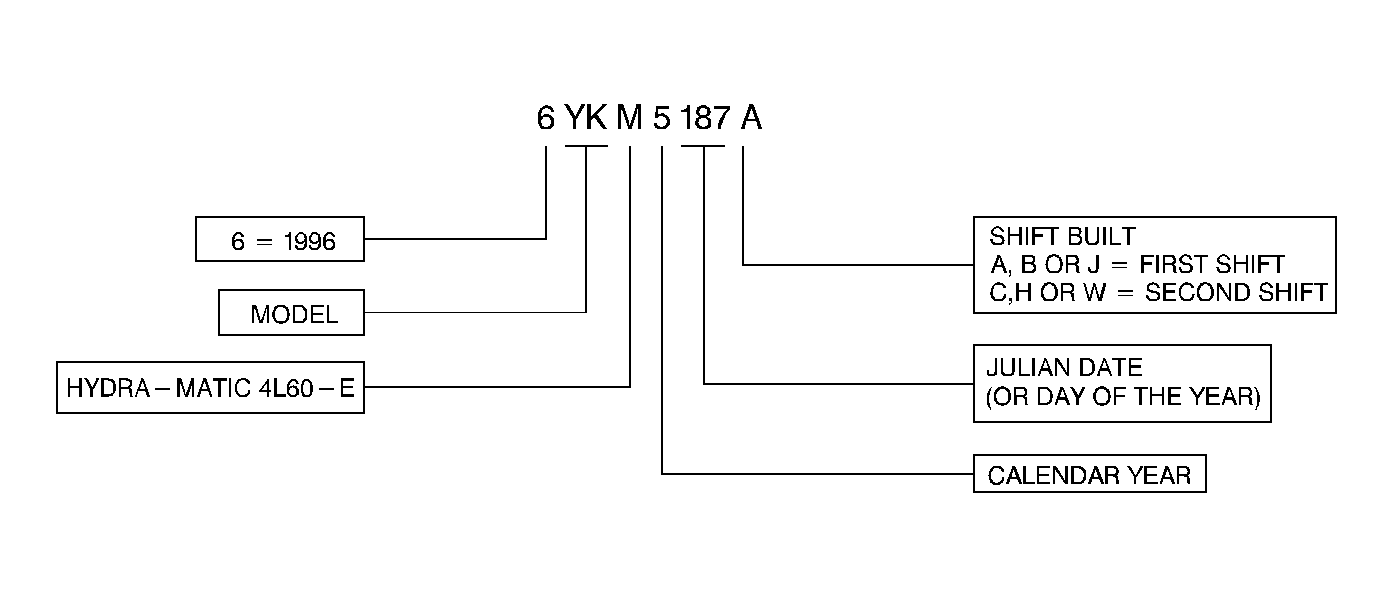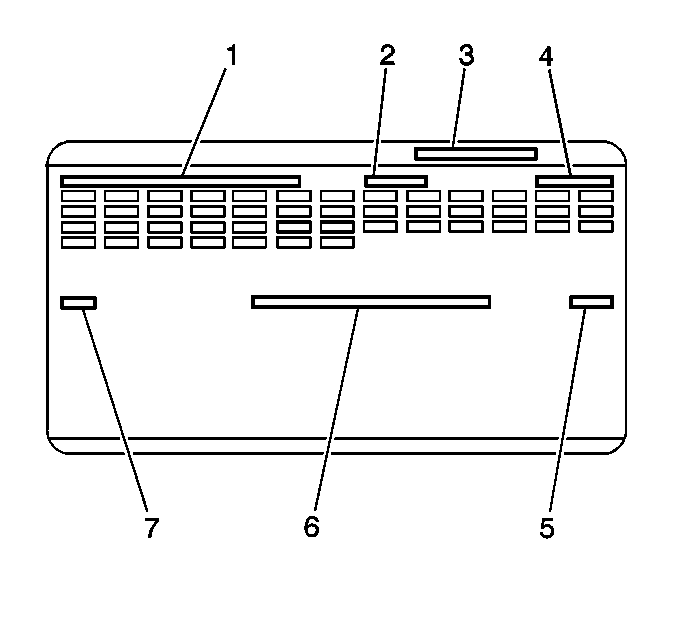The HYDRA-MATIC 4L60-E transmission has the identification
information stamped into the case pan rail.
This information helps the service technician order the correct replacement
parts from a GM parts catalog.
Additional transmission identification information is provided on the
Service Parts Identification label. This label shows the Regular Production
Options (RPO) as well as the standard and mandatory options. This label is
affixed to the inside of each vehicle at the assembly plant. For more information,
refer to Section 0A.



